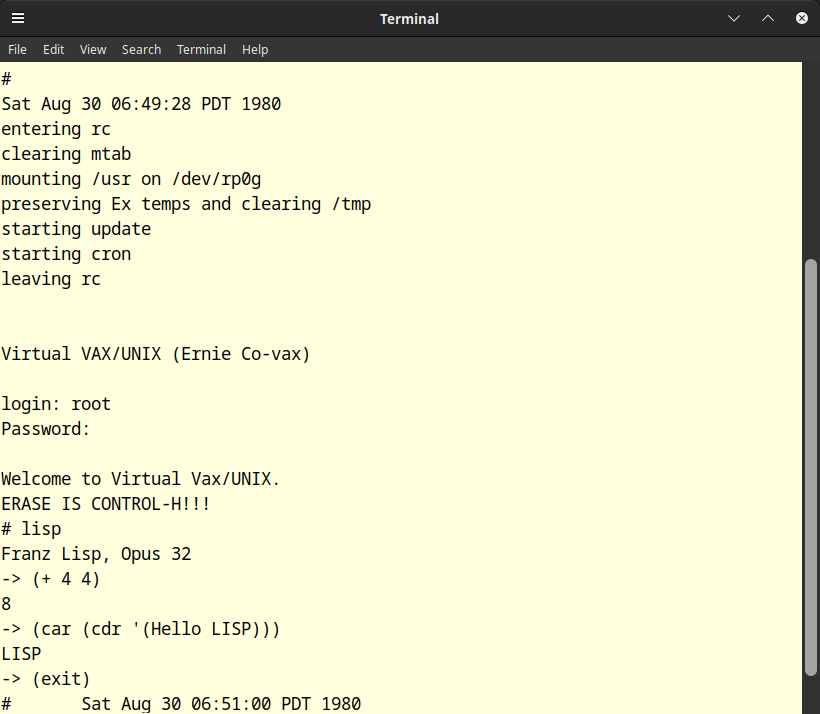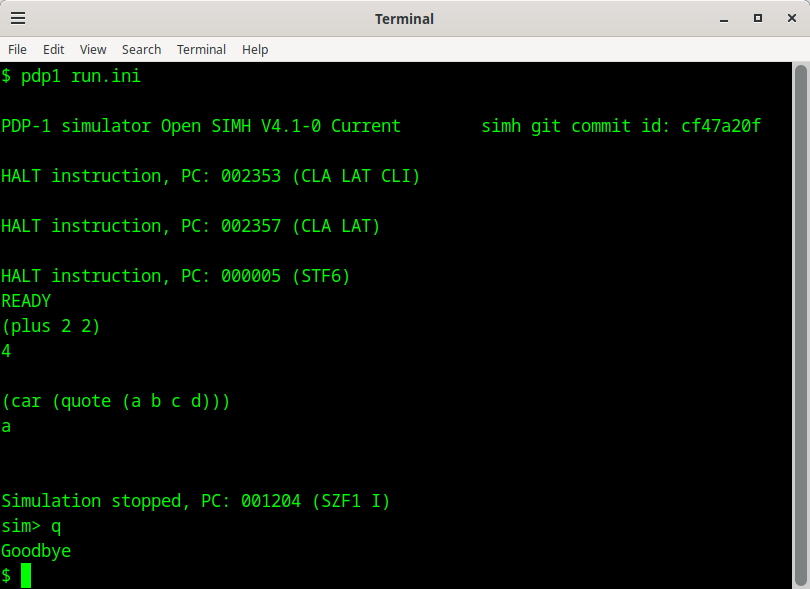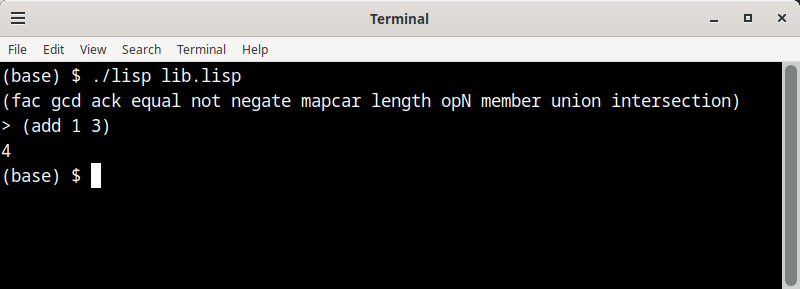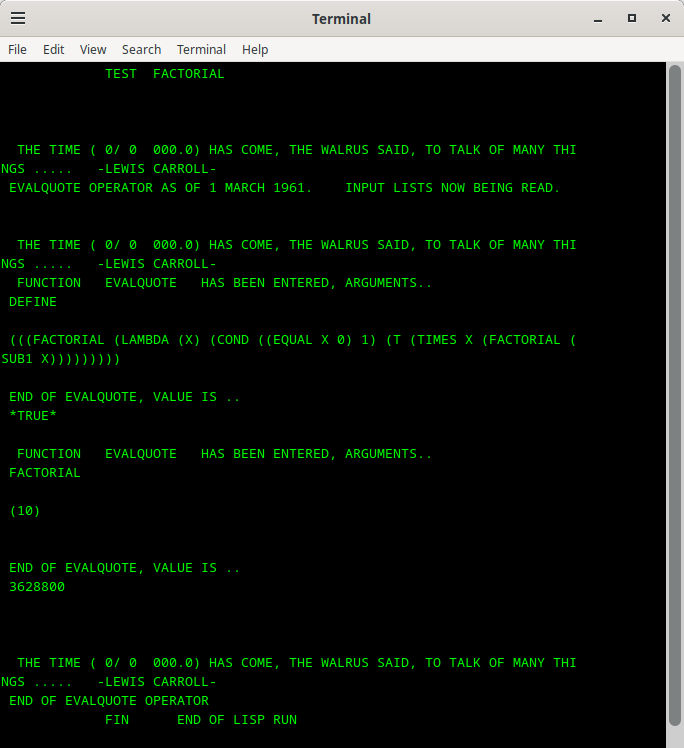
Welcome to decuser’s blog
Topics on this blog include computing, retro-computing, operating systems, math, and whatever other technical subjects I happen to be exploring that I find interesting enough to take and share notes about.
Posts
-
Will's Geometry - A Setting Out.
This is a note where I begin to develop my own geometry based on the example of Euclid, but with an eye towards addressing its shortcomings - what hubris?! But seriously, I’m pretty sure my geometry will pale in comparison. The purpose of the exploration is not to show off, but to learn more about the world and in this regard, will be interesting and educational.
-
Geometry Explorations
This note sets up a series of related notes pertaining to my explorations in Geometry and by extension, Maths.
The explorations are my work in trying to make sense of the world through math. They are presented here, in part, to motivate me to express my thoughts in a more organized fashion than I might otherwise, and in part to share in the hopes that some small few might benefit or wish to chat about things.
So, enjoy and if you do, feel free to email me about it.
-
MACLISP in ITS running on an emulated PDP-10
This is a longer note that describes the process of getting ITS (Incompatible Timesharing System) up and running in order to run MACLISP. ITS is quite a large system and it has many different programming languages and programs available. In this note, we will only be using lisp and emacs, but future notes will explore logo, and perhaps other languages found in the distribution.

-
Franz LISP Opus 32 in 3BSD running on an emulated VAX 780
This note describes how to set up and run Franz LISP Opus 32 running on 3BSD running on an emulated VAX 780. This version of Franz LISP is Opus 32 and it is a LISP 1.5 derived LISP from 1979.

-
pdp1-lisp running on an emulated PDP-1
This note describes how to set up and run PDP-1 lisp. It’s a pretty brief walkthrough. If you run into any issues, let me know.

-
Rob Pike's LISP 1.5 in Go running on Debian 12
This note describes how to set up and run Rob Pike’s LISP 1.5 in Go.
LISP 1.5 was the first LISP that was made generally available. Rob Pike implemented a minimalist version of the EVALQUOTE function described on page 13 of the LISP 1.5 Programmer’s Manual https://www.softwarepreservation.org/projects/LISP/book/LISP%201.5%20Programmers%20Manual.pdf or grab a local copy

-
LISP 1.5 running on an emulated IBM 7094
This note describes how to set up and run the oldest available ancestor of all extant LISPS and Schemes.
LISP 1.5 was the first LISP that was made generally available. It is available to run on the OpenSIMH IBM 7094 emulator.

-
Schemes, LISPs, and Lambda
This note sets up a series of related notes pertaining to my explorations in LISP and Scheme. I began to be interested in functional programming a few years ago and started looking around to find resources to learn it… in my limited spare time. After finding some resources, I would study it, set it aside as too esoteric, pick it up again thinking - this is it, I’m going to master this one way or another, only to set it aside as frustratingly difficult to understand and lacking in applicability. Lately though, I have found some standout resources and worked through enough of them to begin to actually get my mind wrapped around functional programming. Below you will find a brief, informal annotated bibliography of sorts and an explanation of what’s coming in the further explorations into implementations.
-
Installing and Using Research Unix Version 7 on the OpenSIMH PDP-11 Emulator
A video walking the user through the process of installing and using Research Unix Version 7 on the Open SIMH PDP-11/45 and PDP-11/70 emulators.
Enjoy!
-
UCB STk Scheme Interpreter for Working Through Brian Harvey's CS61A Course
This note describes how to install the UCB STk 4.0.1 Scheme interpreter on modern 64 bit Debian based systems. It also describes a method of building the Debian Package used to install the program. This is the version of scheme used by Brian Harvey in his 2011 course, CS61A: Structure and Interpretation of Computer Programs, named after and using famed text, Structure and Interpretation of Computer Programs by Harold Abelson and Gerald Jay Sussman with Julie Sussman, a phenomenally good computer science textbook.
Now, I’m not a package maintainer and I certainly don’t know the nuances of building packages, this is just meant to document how I was able to get this working in 2023 after reading tons of “too bad, so sad, I can’t get it to work posts”, YMMV, but I’ve tested on LMDE5 (Elsie), Mint 21.1 (Vera), MX Linux 21.3 (Wildflower), and Ubuntu 22.04.2 (Jammy Jellyfish).
Here’s a screenshot of the working system running on LMDE5:

- •
- 1
- 2